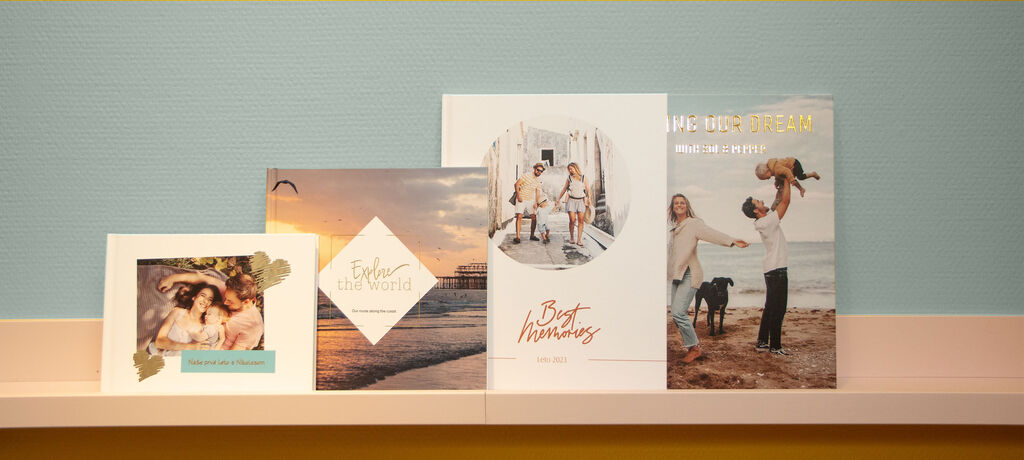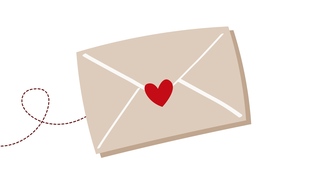
Photography Tips
10+ Food photography tips for cookbook-worthy photos
29th May 2025
If you’ve ever tried to take a picture of your food in a restaurant, you know it’s more difficult to reflect how delicious it looks in real life on camera. Achieving magazine-standard food and drink photography requires lots of practice and persistence, plus a few helpful tips!
Sue Atkinson is a professional Food and Drink Photographer who has previously shot for Krispy Kreme, Warburtons, McCain’s, Tetley and McDonalds. This means she knows a few things about making dishes look delightful. To help you get started, Sue shares her technical advice and discusses what really goes on behind the scenes of food photography.
Kit recommendations for food photography
As food photography essentially involves creating various still life shoots, you don’t need a huge amount of kit to get started. Sue explains, “I would suggest any simple camera with standard and macro – or close-focusing short telephoto – lenses. A solid tripod is a must when you are photographing close-up and want to get a good depth of field.”
When it comes to lighting, the kitchen itself can offer a range of helpful tools. “As a simple reflector, it’s hard to beat a piece of white polystyrene – the sort that household goods come packed with,” says Sue. “Get some black card to block off areas of light and reflections where you don’t want them. The silver card from chocolate boxes is great for bouncing patches of light too!”
A few extras Sue recommends having to hand for your shoot include:
- Simple stands to prop up your reflectors
- Masking tape
- A pair of tweezers for moving delicate items in awkward spaces
- A small paint brush for removing crumbs
- A small spray container for spritzing
General food photography tips
Having a few quick tips in mind will help your food photography shoot run smoother and help you get better results.
Plan ahead
Once your food is cooked and in front of the camera, you have a limited window before it starts looking past its delicious best. Thinking about the photography style and frame you want to achieve before you start means you can get the set up ready to make the most of this time.
Consider what will make your food look appetising and if there are any barriers to getting the right shot. For example, steam from hot items could quickly fog your lens, so you might need to set up your camera at a different angle or wait until it cools slightly before getting the best shot.
Test out angles and frames
The most popular food photography shot is a direct overhead, as this helps viewers see the dish in its entirety. However, do add a few variety to your shots, you might want to try angles closer to eye level. Adding height can also help give your photos depth, so lift your dish on a wooden chopping board or place it on a stand.
When thinking about your frame, make sure you leave plenty of negative space. This will emphasise the dish and help give the image focus. You might want to add in some contextual elements slightly off frame, such as the main pan your dish is served from, a utensil or multiple servings of the same dish.
Lighting
To make your dish look appetising, you need to get the lighting right, says Sue. Soft, even light is best for this, so avoid using flash and use reflectors to aim it at the right areas.
“Plan your props and make sure your lighting is going to work,” Sue insists. “If you want to cut a slice from a joint, make sure the light will be set at an angle where it picks up the texture and where it’s not flat on or in shadow.
“If you can’t afford to buy a single studio flash with reflectors, you can get great results shooting by daylight from a window. Find some tracing paper to stick across it as a diffuser if the light is too strong."
Some subjects, such as chocolate, can be especially difficult to light correctly because of it's reflective surface. For more detailed tips and lighting techniques specifically for chocolate photography, check out our other blog post here - all about how to best capture chocolate.
Backdrop
The backdrop you choose will set the mood for your photos, so it needs to be carefully considered. A good rule of thumb is to choose something plain, as Sue explains, “Look out for things that are unobtrusive such as old worn wood, painted surfaces, stone or slate and metal – old baking trays can also work a treat too!”
There will also be variety depending on the theme. For example, if you’re shooting a birthday cake, you might want a brightly coloured table cloth with a few sprinkles of confetti. When photographing a signature dinner, choose a lux tabletop such as marble or quartz to set the tone.
Camera settings
To get focus on the right areas, Sue recommends, “Try to work with the manual settings on your camera and experiment with different aperture and shutter speed combinations to get effects that you like.” Playing with the depth of field is also important to keep the right parts of your frame in focus and avoid blur in key areas (such as your dish).
Tricks for shooting specific dishes
Ingredients behave differently under the lens, so having a few tricks up your sleeve from Sue will help you get them all looking fresh.
How to keep meat looking delicious
Meat is best photographed when it’s still warm. This is because it looks plump before it begins to dry out. But when it cools down and begins to dry, you can keep it moist by brushing with very hot water or a little bit of oil. This will help keep the natural shine.
Once the fibres begin to dry out and the fat begins to coagulate, it is difficult to make meat look appetising in a photograph. Therefore, it’s best to photograph meat that’s been under-cooked as the outside appears cooked, but the overall shape is retained.
If you’re an advanced food photographer looking for a challenge, then Sue has a recommendation. “One of the most difficult items to shoot is a whole fowl,” she says. “This is largely because, when it is cooked, the flesh shrinks and the skin expands so when it cools down you’re left with a lot of wrinkly gaps! A lot of liquid will also seep out of a properly cooked bird which looks most unappealing.
“For most photographic purposes, they are never cooked through, usually browned with a variety of mixtures including paint, caramel, gravy-browning or marmite. I have even heard of boot polish being used! Pouring boiling water on the skin or using a heat gun can help get the desired golden effect but requires skill and practice.”
Photography tips for savoury dishes
“Don’t overcook pies and quiches and shoot as soon as you can once they are out of the oven,” Sue insists. “Otherwise, the fat in the pastry begins to congeal and forms a rather grey hue. You can brush them with a light oil to keep the shine. If you are cutting into them, use a very sharp knife to avoid mess, but I think a few crumbs are always appealing!”
If you’re photographing pies, then having some extra cooked filling and gravy to hand means you won’t be left with any unwanted gaps and the serving will look generous. Just ease the extras into the cut space in an echo of the cut you have made. Otherwise it will inevitably look false.
Sue also recommends having a pipet or meat baster for dribbling gravy where you want it to be. “Let some fall out onto the plate,” she says. “It’s much more appetising that way. If the pastry collapses, it is sometimes possible to cut a section from another pie and carefully ‘transplant’ it. It all depends on how much time and patience you have – and the effect you want!”
How to make fruit and vegetables look fresh
As with meat and savouries, if you are photographing fruit or vegetables cooked, you need to under-cook them so that they retain their shape, texture and colour.
With vegetables, it is a good idea to blanch them and then douse them with cold running water to refresh the colour. If you are grilling or roasting them, a light brush of oil may help. If you’re shooting raw fruit and vegetables, pick out produce which is really fresh yourself and include a few leaves to use as a little prop if the picture is looking a bit stark without.
Sue also says, “Sometimes a little spritz with fresh water or a mix of water and glycerine adds a bit of extra interest, but don’t overdo it. My best advice would be to enjoy the natural imperfections,”
Tricks for shooting drinks
Photographing drinks brings two challenges – the drink and its container! From cold to hot, the different properties of liquids will lead to visual variations, from ice to steam with condensation, bubbles, drips, dribbles, swirls and splashes.
Then, there are all the fabulous colours of the drinks such as the golden browns of beer, coffee and whisky to all the luscious fruit drinks and cocktails.
To get your beverages looking great, Sue recommends, “Choose your glasses carefully and check the reflections by doing a rough set-up to check for potential problems. You may find it useful to carefully place a piece of white card behind your glass to bounce the light back into the liquid.
“Make use of the fridge and the kettle,” she advises. “Make cold drinks really cold to help achieve condensation and pour hot drinks at the very last minute if you want to capture steam.”
What’s the most difficult food to shoot?
“I think the most difficult thing to shoot is pizza,” says Sue. “You really need to shoot it hot, but it has a nasty habit of cooling down very quickly. It was terrible in the days we had to wait 60 seconds for a Polaroid to process before we could shoot film.”
When it comes to the question she gets most often, Sue explains, “I am often asked about shooting ice-cream. Do we use mashed potato? Generally, ice cream is actually ice cream! If you want a bit of melt, it’s really the only thing to use. However, when we are shooting scoops or balls of ice cream, we make them first and then freeze them in a container with dry ice. This extends the working time.
“However, I have also worked with a mixture of lard and icing sugar which is surprisingly effective, yet revolting and very difficult to clean up afterwards!”
Create your own food photography portfolio or cookbook
Whether you’re building a personalised recipe book of your favourite dishes or showcasing your food photography portfolio, gather together your best images in a CEWE PHOTOBOOK. With six paper types, five cover options, and nine sizes to choose from, you can always print and present your food and drink photos at their delicious best! Discover how creating your own personalised recipe book can make preserving your favourite recipes even more special.












